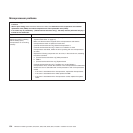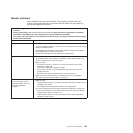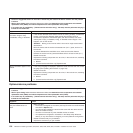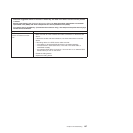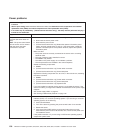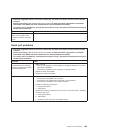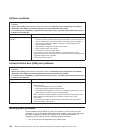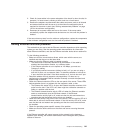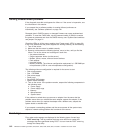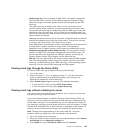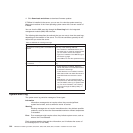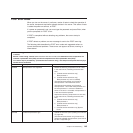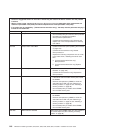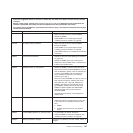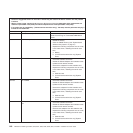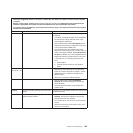
Solving undetermined problems
If the diagnostic tests did not diagnose the failure or if the server is inoperative, use
the information in this section.
If you suspect that a software problem is causing failures (continuous or
intermittent), see “Software problems” on page 140.
Damaged data in CMOS memory or damaged firmware can cause undetermined
problems. To reset the CMOS data, use the password switch 2 (SW4) to override
the power-on password and clear the CMOS memory; see “System-board switches
and jumpers” on page 21.
Check the LEDs on all the power supplies (see “Power-supply LEDs” on page 24).
If the LEDs indicate that the power supplies are working correctly, do the following:
1. Turn off the server.
2. Make sure that the server is cabled correctly.
3. Remove or disconnect the following devices, one at a time, until you find the
failure. Turn on the server and reconfigure it each time.
v Any external devices.
v Surge-suppressor device (on the server).
v Modem, printer, mouse, and non-Lenovo devices.
v Each adapter.
v Hard disk drives.
v Memory modules. The minimum configuration requirement is 1 GB DIMM per
microprocessor (2 GB in a two-microprocessor configuration).
The following minimum configuration is required for the server to start:
v One microprocessor
v One 1 GB DIMM
v One power supply
v Power cord
v ServeRAID SAS adapter
v System board assembly
4. Turn on the server. If the problem remains, suspect the following components in
the following order:
a. Power supply
b. Power-supply cage
c. Memory
d. Microprocessor
e. System board
If the problem is solved when you remove an adapter from the server but the
problem recurs when you reinstall the same adapter, suspect the adapter; if the
problem recurs when you replace the adapter with a different one, suspect the
system board or extender card.
If you suspect a networking problem and the server passes all the system tests,
suspect a network cabling problem that is external to the server.
Event logs
Error codes and messages are displayed in the following types of event logs:
v POST event log: This log contains the three most recent error codes and
messages that were generated during POST. You can view the POST event log
through the Setup Utility.
142 ThinkServer TS200 Types 6522, 6523, 6524, 6525, 6526, 6528, 6529, and 6530: Installation and User Guide



